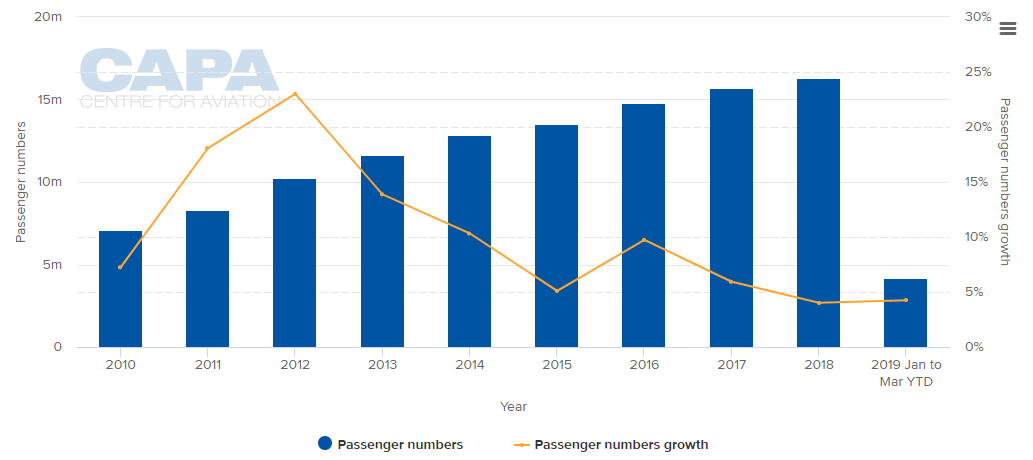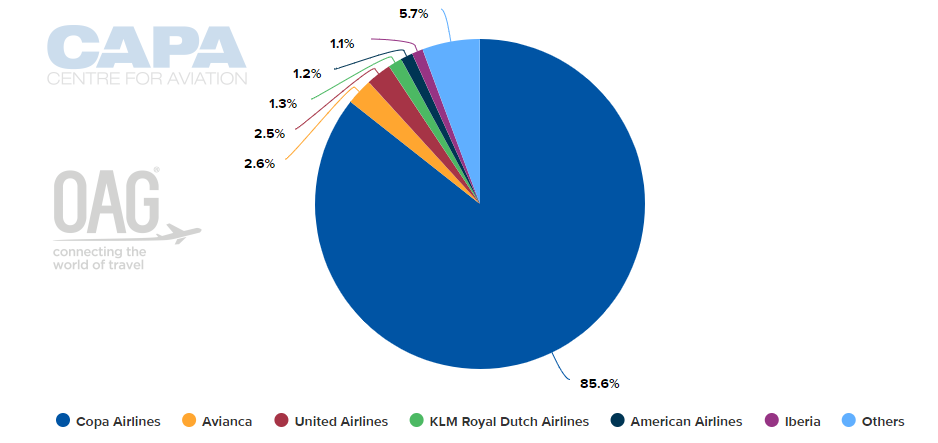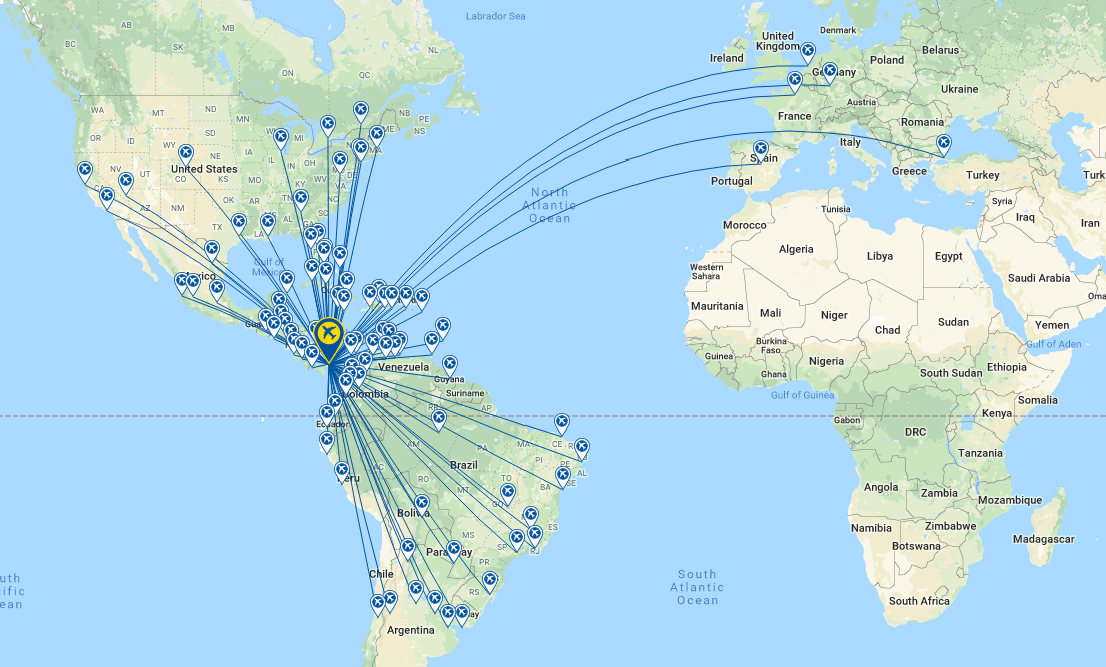Summary:
- Panama City's Tocumen International airport opened its Terminal 2 facility at the end of Apr-2019;
- The new structure helps consolidate Tocumen International's place as one of the leading hubs in the whole of Latin America;
- Copa Airlines, a Star Alliance member airline, has much to do with that ranking, and it has little in the way of immediate competition.
Tocumen International, which serves a city of two million in a country of four million, is one of the success stories of Latin America. Passenger traffic in 2018 amounted to 16.2 million, which made it the ninth busiest in Latin America, just ahead of Rio de Janeiro's Galeão Airport and the busiest airport in Central America by a large margin.
CHART - Tocumen International airport saw rapid traffic growth during the first years of the latest decade and while these has returned to more stable levels, annual growth remains above 4% per annum Source: CAPA - Centre for Aviation and Panama City Tocumen International Airport reports
Source: CAPA - Centre for Aviation and Panama City Tocumen International Airport reports
The main reason is that it has been successful in establishing itself as one of the leading hubs for the region, despite the small population. It is helped in that respect by Panama's service sector economy, which accounts for over 75% of GDP and which includes banking, offshore banking, insurance, free trade zones and, of course, the Panama Canal. The US and China are the top users of the Canal. Panama is reputed to be involved in up to 5% of all global trade.
The leading carrier by far is the home-based Copa Airlines, which is the main hub operator. Copa currently has almost 86% of the seat capacity. It was originally set up with help from Pan Am and can trace its hub capability back to its entering into a partnership with Continental Airlines, in the late 1990s, a partnership that continues to this day with United Airlines.
CHART - Copa Airlines dominates at Tocumen International airport and is responsible for more than four in every five seats Source: CAPA - Centre for Aviation and OAG (data: w/c 13-May-2019)
Source: CAPA - Centre for Aviation and OAG (data: w/c 13-May-2019)
Today it is a member (since 2012) of the Star Alliance, which accordingly has a massive collective impact on Tocumen International, with over 92% of the seat capacity, probably one of the most dominant positions by an alliance at any airport.
The airport's route map explains its influence on the region. Tocumen International is a junction for routes operating to and from North America, the Caribbean and South America as far as southern Brazil and Argentina. The majority of those routes are operated by Copa and/or by alliance partners. These are supplemented by a small number of trans-Atlantic routes, and one trans-Pacific one, to Beijing. The Chinese will always consolidate their influence in an area by way of a direct air service from Beijing if it is economically viable.
MAP - Tocumen International airport is currently directly linked to 88 passenger and six freight destinations Source: CAPA - Centre for Aviation and OAG (data: w/c 13-May-2019)
Source: CAPA - Centre for Aviation and OAG (data: w/c 13-May-2019)
There are few other airports in the region that are so well situated geographically and which offer the same degree of route coverage. Realistically only airports in Costa Rica, which like Panama has a booming tourism industry to support route introduction, could compete. But San Jose's Juan Santamaria Airport, where Copa also has a strong presence (it is marginally the biggest carrier by seat capacity), is much smaller than Tocumen International.
Tocumen International has been expanding for several years. A new domestic terminal building was inaugurated in Jan-2015, followed by the south terminal, which was identified as Terminal 2 in September of that year. It could receive a new runway in the future, parallel to the existing one, to increase capacity, while plans for the development of an 'airport city' of 8.5 million square metres, referred to as 'Panatropolis' is still under consideration.